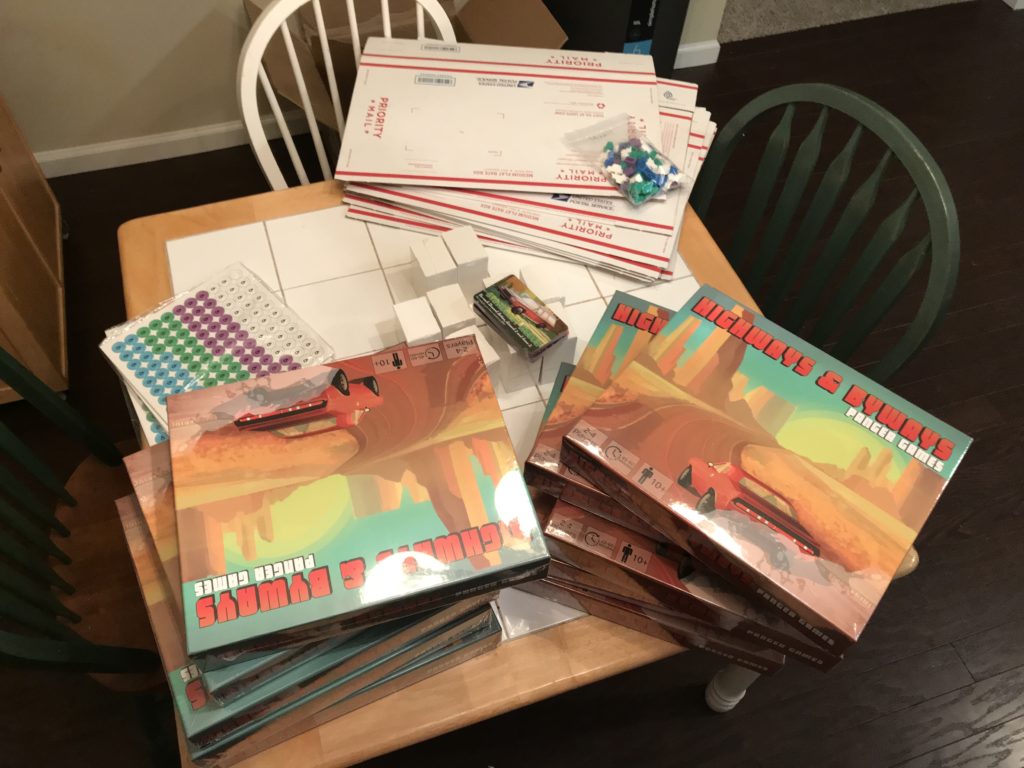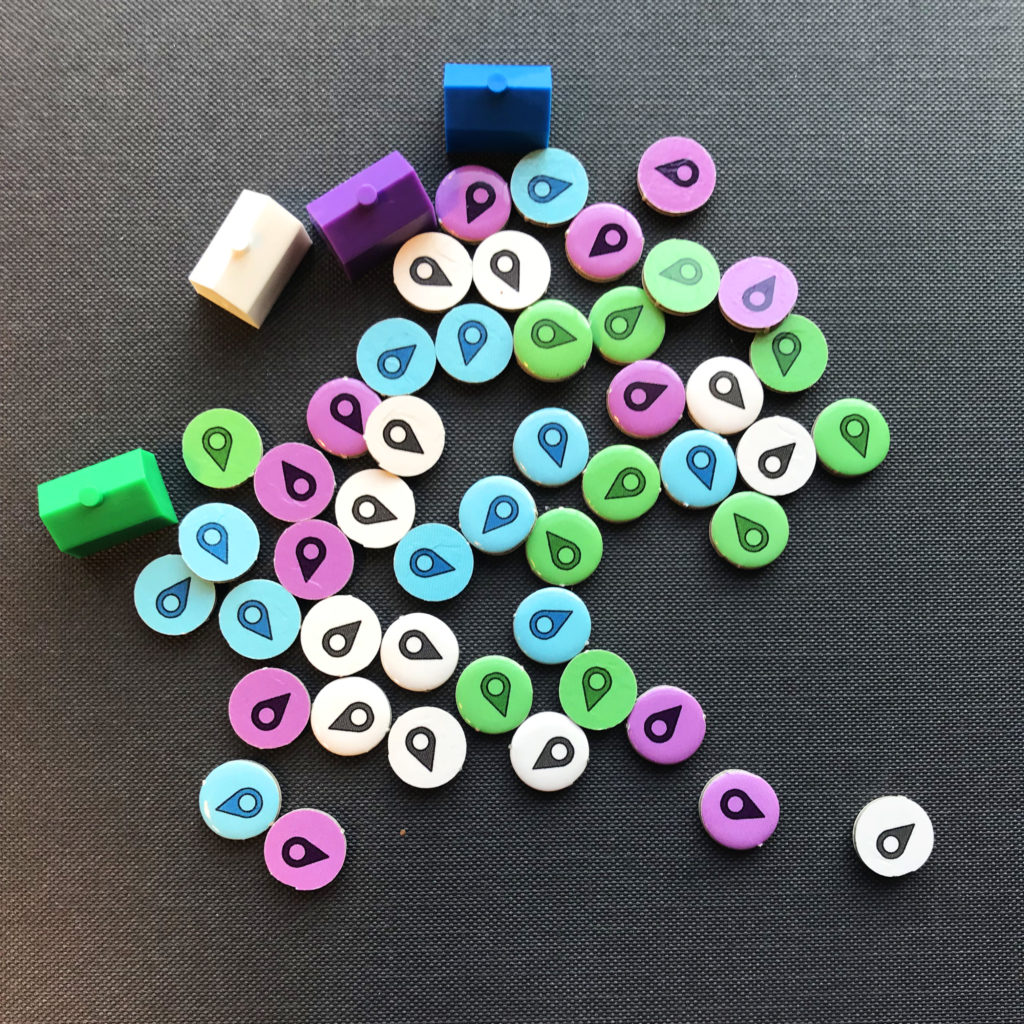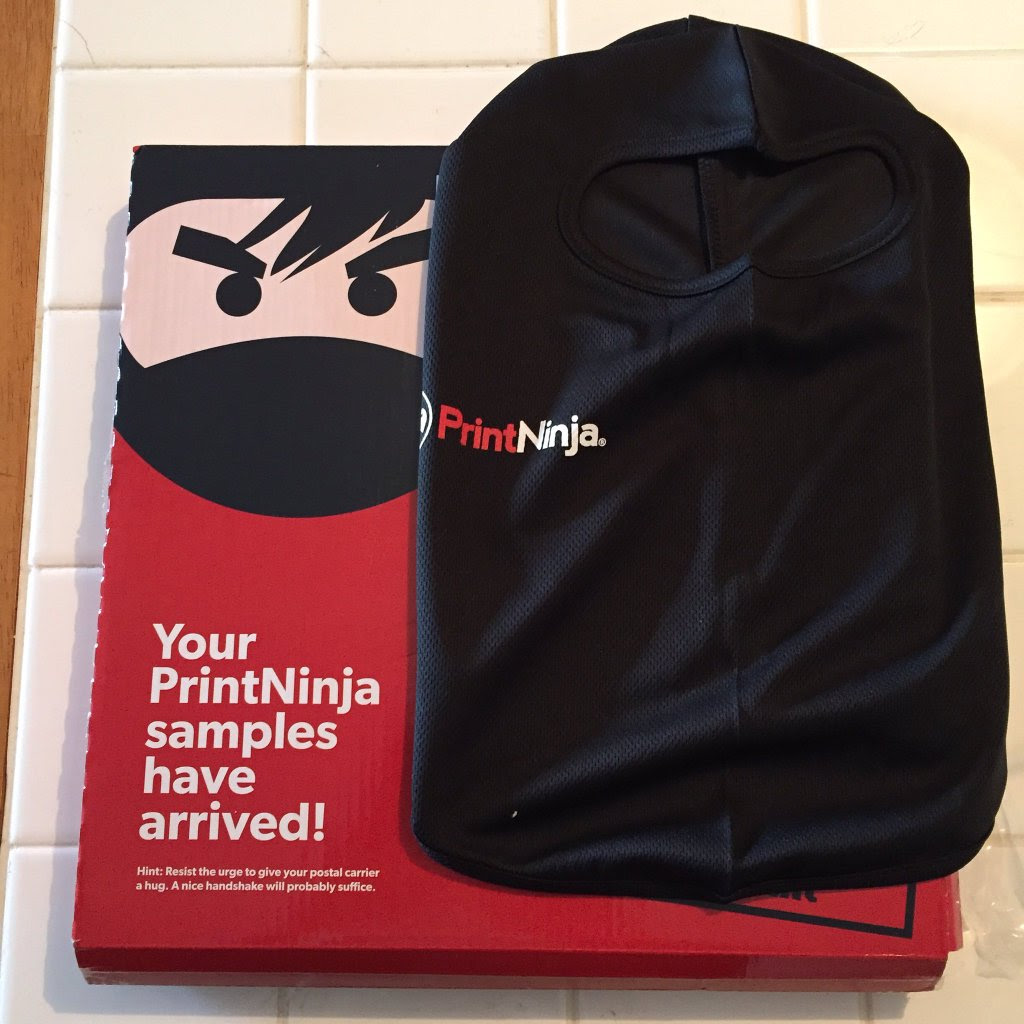Board game development is a very individual process. Every single developer has different methods for creating their games. This article is the last of a 19-part suite on board game design and development.
Looking for more resources to help you on your board game design journey?
Here you go: no email required!
Like this writing style?
Check out my latest blog on marketing here.
Today I’ll be talking about how to check your work. Specifically, I’ll be talking about ordering and testing samples of your game. There are a lot of reasons you might want to do this. They include catching accessibility issues before they are a problem, printing beautiful review copies, and evaluating offset printers before spending several thousand dollars on a big print run.

This guide comes in five parts:
- Ordering Print-on-Demand Samples for Rapid Prototyping
- Testing for Accessibility
- Quality Assurance in Board Gaming
- Sample Kits from Offset Printers
- Custom Samples from Offset Printers
Ordering Print-on-Demand Samples for Prototyping
There are a lot of companies out there who can help you create really pretty board game prototypes before you commit to a much larger print run. These include The Game Crafter, Make Playing Cards, and Board Games Maker. I mentioned them a while back in How to Create Board Game Specs and Files for Your Printer. If you’re not familiar with these sites, have a look at the article I just linked. It will catch you up to speed.
The basic idea of ordering print-on-demand samples is to avoid the long wait time and the high cost of ordering offset printer samples. Offset printing is what is used for large print runs like 500 and 1,000. The set-up costs are high, but the per-unit cost is low. That means a print-on-demand company could crank out a board game prototype for around $100. This is better than an offset printer which could charge $500 or more.
Whether you are printing review copies, looking to test your game with better parts, or simply see your ideas come to life in a beautiful way, ordering print-on-demand samples can be really handy. For Highways & Byways, I used print-on-demand samples to test the size of certain pieces on the board. This helped me realize that certain pieces that I wanted to use were a little too big, so I ordered some smaller pieces.
Testing for Accessibility
I’ve talked about accessibility several times on this blog. In fact, you might want to see parts 1, 2, and 3 of my conversation with Dr. Michael Heron of Meeple Like Us on the subject. This can get really deep really fast, but for simplicity sake let’s just say this: ordering samples of your game can help you make sure your game is easy to use under the conditions it is likely to be played.
Here is an easy to understand example from Highways & Byways. My game contains Travel Markers – round pieces a half-inch (1.25 cm) in diameter that are placed on the board to mark destinations. I was worried that their small size would be problematic for players from a physical accessibility standpoint. Turns out that nobody I played it with had a problem – and I played with a lot of people! Testing with different components for tactile ease-of-use went a long way. I ended up using punch-out pieces that were 2.5mm thick instead of 1.8mm thick.

You can usually make your own board games for play-testing using what you’ve got around the house. Posterboard and Sharpie markers go a long way. Yet if you really want to test every facet of your game for physical and visual accessibility, printing a copy and testing it is ideal.
Once again, I’ll plug parts 1, 2, and 3 of my conversation with Dr. Michael Heron of Meeple Like Us. Scroll all the way to the bottom and you’ll see a nice, easy-to-use checklist of things you’ll want to test for. Pick what’s important and make a list that you can check off.
Quality Assurance in Board Gaming
No matter what accessibility issues you may encounter, some things are constant in board game quality assurance. If you send out copies of your game to board game reviewers, they need to be good quality. They don’t have to be 100% perfect, but they need to have no glaring flaws, no major differences from a gameplay standpoint, and they need to photograph well. For copies you send to publishers, it may be a different story, but if you’re going the self-publish through Kickstarter route like I am, you need good copies.
You’ll need to test every component for print quality. There are a few things you’ll want to look out for specifically. They include quality of materials, quality of colors, and print alignment.
Cards need to feel sturdy and not cheaply made. If you want to see what bad cards look like, go to the Dollar Tree and by a 2-pack of playing cards for a dollar. If your cards come out like that, you need to reprint them before sending them out reviewers. They need to feel like something you’d get out of a box of Pandemic or Magic. Hold up a light to them, make sure they’re not see through. Make sure there isn’t a strong and weird inky smell.
Make sure colors look right. Check under both bright and dim lighting. If your colors come out too dim, you might have used RGB colors on your computer instead of CMYK. That forces printers to substitute RGB colors which cannot be printed by CMYK printers with whatever’s closest – usually not the best match. You’ll have much, much better control on how your printed pieces come out if you use CMYK colors on your computer from the beginning. If your colors come out soaked, muddy, and ugly, you might have a problem with ink saturation. If your blank ink comes out to be a dark gray ink by mistake, you probably weren’t using rich black. A good offset printer will help you fix all this stuff before you spend thousands of bucks, but print-on-demand printers will just print whatever you give them with no editing.
When you’re making cards, boards, rules, punch-out pieces, or anything that requires printing, you never want to print all the way to the edge. If the printers are even slightly out of alignment, you’d lose some of the information you wanted to print. Check all your printed materials to make sure they printed dead on the center, or as close as possible. As an example, if you print a deck of cards and everything is shifted to the right, that means it was out of alignment.
As for pieces made from plastic or wood, just make sure they don’t feel cheap. Wood shouldn’t splinter, plastic should feel sturdy, and the sizes and colors should be correct. If they’re not, you can usually compensate by buying different pieces.
Sample Kits from Offset Printers
Once you’ve figured out how to make a game that prints and plays well with print-on-demand machines, you may want to order a larger print run. To do that, you would need to look into offset printing. Offset printers cost lots and lots of money to create prototypes, so they have another method of evaluating their work. You can ask for a sample kit.

Sample kits will contain games printed by the company. Though they won’t be original copies of your game, you can get a rough idea of the quality of their work through what they send you. See the previous section for an idea of what to look for. Just about any offset printer worth their salt will be willing to send you a sample kit for free. If they aren’t willing to do that, I consider that a red flag.
Custom Samples from Offset Printers
Once you’ve figured out how you want your game to look through rapid prototyping with print-on-demand copies, you can order custom samples of your game from offset printers. This is a very expensive process, but there are a few reasons you might want to do it. First of all, sample kits will naturally contain only the best samples – you know, the ones the printer wants you to see before you spend thousands or tens of thousands on a large print run. Second, there are small deviations in product quality between different companies, so you might want a hard copy just to know what to expect. You can avoid a large print run if you don’t like the sample. Losing several hundred dollars because you don’t like the samples is much better than losing several thousand dollars because you don’t like the product that you printed.
Quality assurance is very important to establish yourself as someone who others can trust. In board games, that often involves a mix of usability testing and meticulously looking over every inch of the product. Rapid prototyping through print-on-demand services can help you speed up the whole process before eventually printing a larger run with an offset printer.
Have any questions about ordering or testing game samples? Let me know in the comments 🙂





6 thoughts on “How to Order and Test Samples of Your Board Game”
Dear Brandon: I appreciate very much the articles of yours that I have read. Who knows? I might finally get up the nerve to go from hobbyist to professional (or semipro) game developer. Thanks again for your insights!
Glad you like the blog! I hope this helps you get started in game development if that’s what you want to do 🙂
Hi, I was wondering if there are any suggestions for one-prints you may have. I’m based in the UK and the shipping from the suggested places costs more than the printing! Thanks in advance for your help – and really useful blog content!
Hi
We are Board Games Manufacture,do you need to produce out your games?
Have a nice day
Best Regards
Joy(sales manager)
Tel:0086-574-83023903
Email:joyetoy@188.com
Skype:joyetoy
QQ&Wechat:18512424
Website:http://www.montessorimaterials.cn/
https://www.eduwoodentoys.com/
Brandon,
I have a boardgame prototype and a trademark. I invented the game about 2 years ago. I have family and friends who have played the game several hundred time and I am ready for the next step. I want to make about 500 copies and see if I can sell them and eventually sell the game to a toy company or continue to manufacture it on my own terms. What is your advice? Thank you in advance.